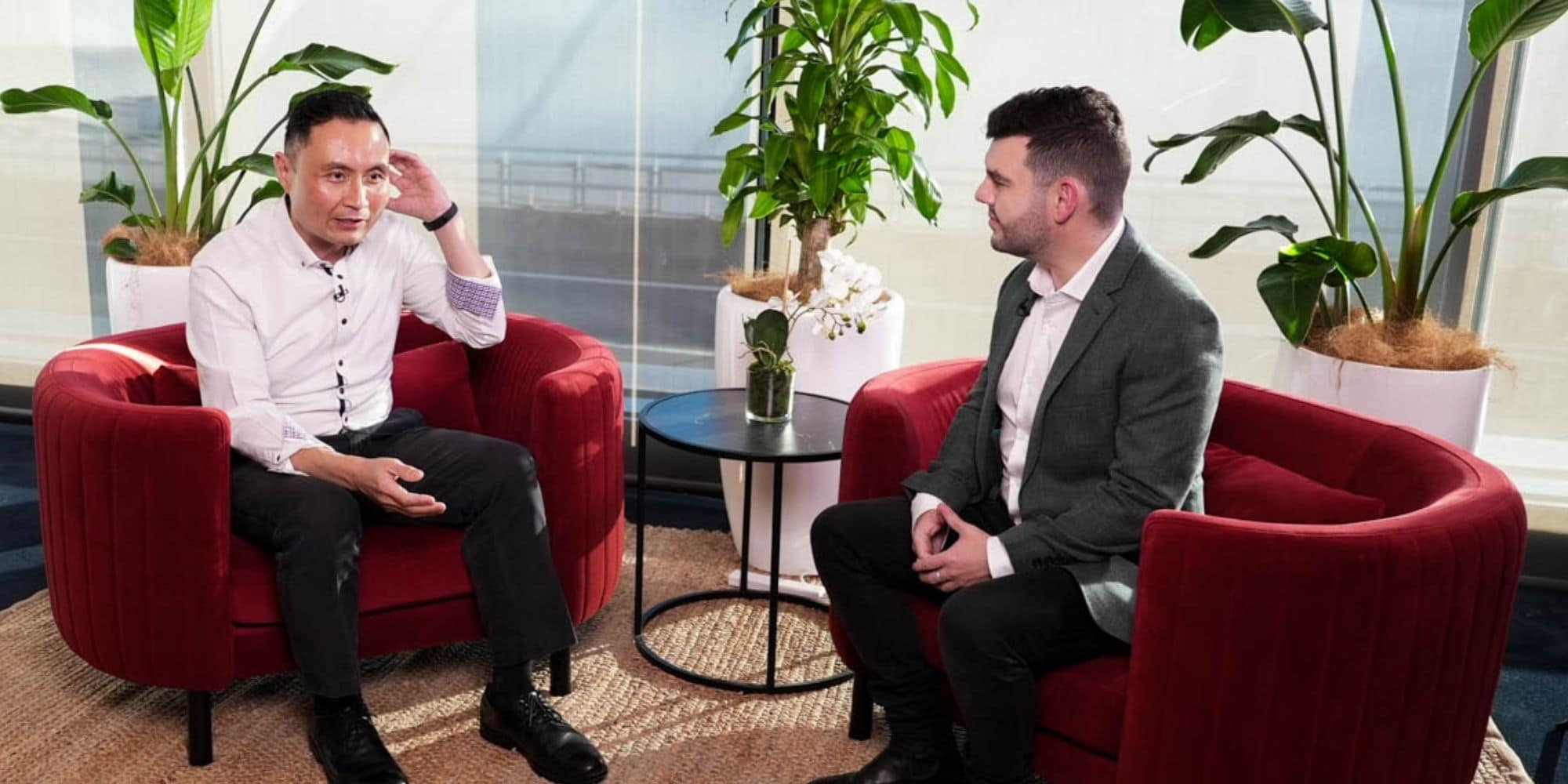As Hearing Australia’s Head of Strategy and Growth, Conrad Chang drives data transformation for customer-centric growth of the business.
Speaking at ADAPT’s Digital Edge Partner, Matthew Hanley, Conrad shares how Hearing Australia is a global leader in providing hearing aids and services to the deaf and hard-of-hearing community.
Destigmatisation of the hard-of-hearing community is the driving force of Hearing Australia’s suite of services and products. Conrad lists examples from Apple and Bose where global efforts are being made to provide Bluetooth and app integration for hearing aids, as well as headphone hearing aids.
Hearing Australia’s innovation has pivoted from being expert-led to customer-led, driven by insights into the use and customer value of the product rather than updated upon audiologist suggestions. This has led to greater engagement through the educated use of the products.
During the pandemic, Conrad found interdepartmental collaboration to increase through virtual means and found the board’s function to become more enabling and supportive than ever before.
He shares his optimism around more sustainable digital innovation and more spontaneous hybrid collaboration.
Matthew Hanley:
Welcome to ADAPT Digital Edge 2021. Thank you for joining us today, and I’d like to start by asking you a little bit about your role and the organisation you work for.
Conrad Chang:
I’m the Head of Strategy and Growth at Hearing Australia. We are the preeminent hearing solutions provider in Australia. We’ve been here for more than 70 plus years. Our main aim is to look after the hearing health of all Australians.
Matthew Hanley:
Hearing aid companies and hearing health have transformed over the past decade. What’s disrupting your industry at the moment?
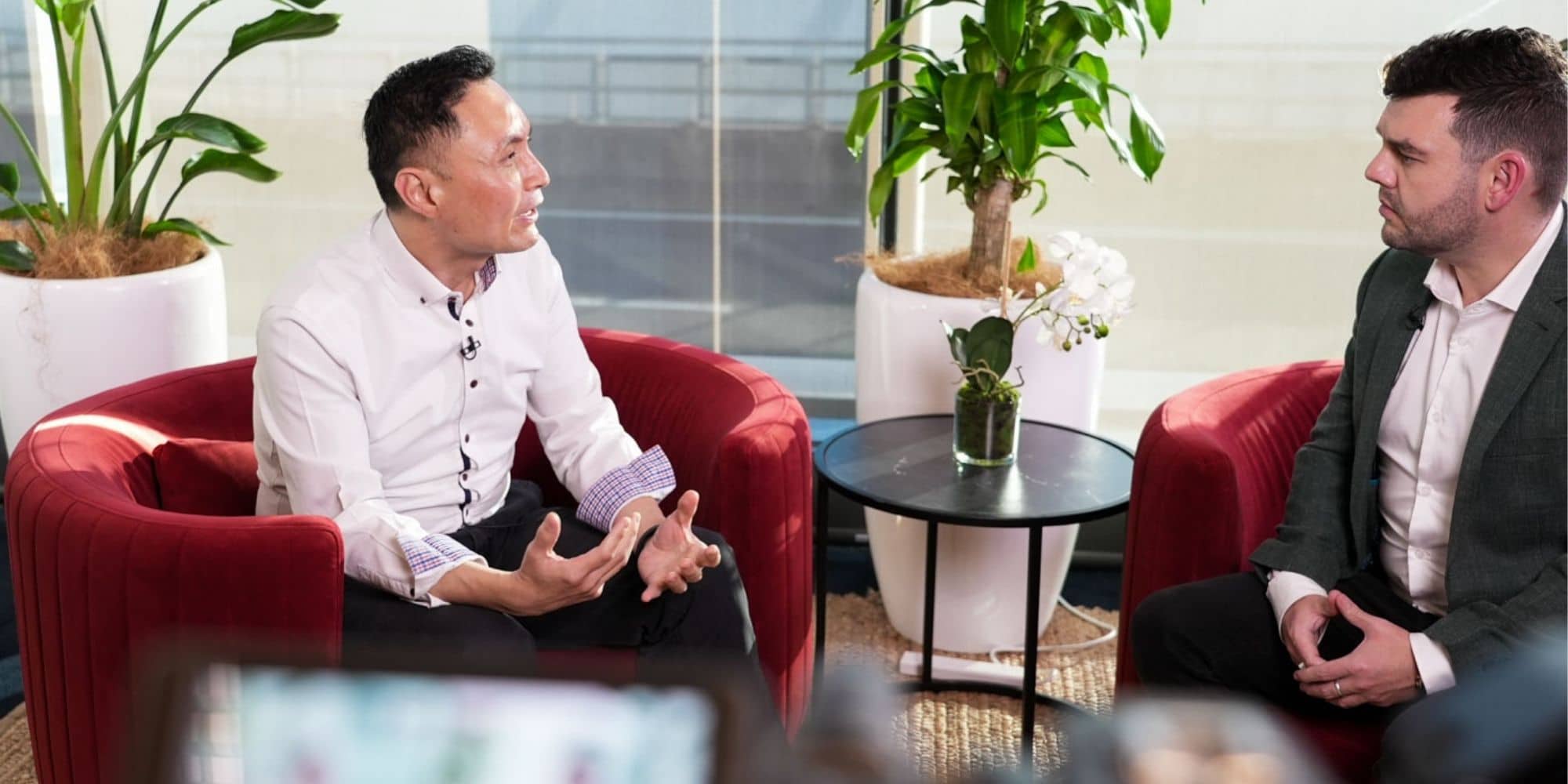
Conrad Chang:
If you think of traditional hearing aids, they tend to be big and clunky, very noticeable, and there’s a stigma. People find it uncomfortable.
People find it embarrassing to wear it. What we’re finding interesting is that our industry is potentially being disrupted by technology.
For example, Apple to its EarPods could potentially test your hearing through apps that come out through iOS.
We see companies like Bose with their headphones potentially also doubling up as low-level hearing aids.
There’s a lot of new developments out there that are changing the way hearing loss is being diagnosed digitally, the way hearing aids are evolving.
Now you can get those new ones that are almost invisible, tiny, connected to Bluetooth. You can take calls with your hearing aids.”
It’s evolving to something that is beyond imagination. It’s about how quickly we can adapt, offer those to our clients and making sure that we also inform and educate them about how to use it, because while all these new technologies are coming out, which is great if the end-user doesn’t use it, then it becomes obsolete.
Adoption is something that will be quite important for us as well.
Matthew Hanley:
How do you manage adoption? How do you manage the creation and getting the business aligned?
You’re heading up Strategy within Hearing Australia. What are some of the factors that you need to go through to be a success?
Conrad Chang:
One of the key transformations that we’ve undergone lately is to make sure that we are more customer-focused.
Having a CX department onboard has made us more customer-centric. Previously, it used to be a very clinical company-driven philosophy where the audiologist knows best and would prescribe the best solution for the customer.”
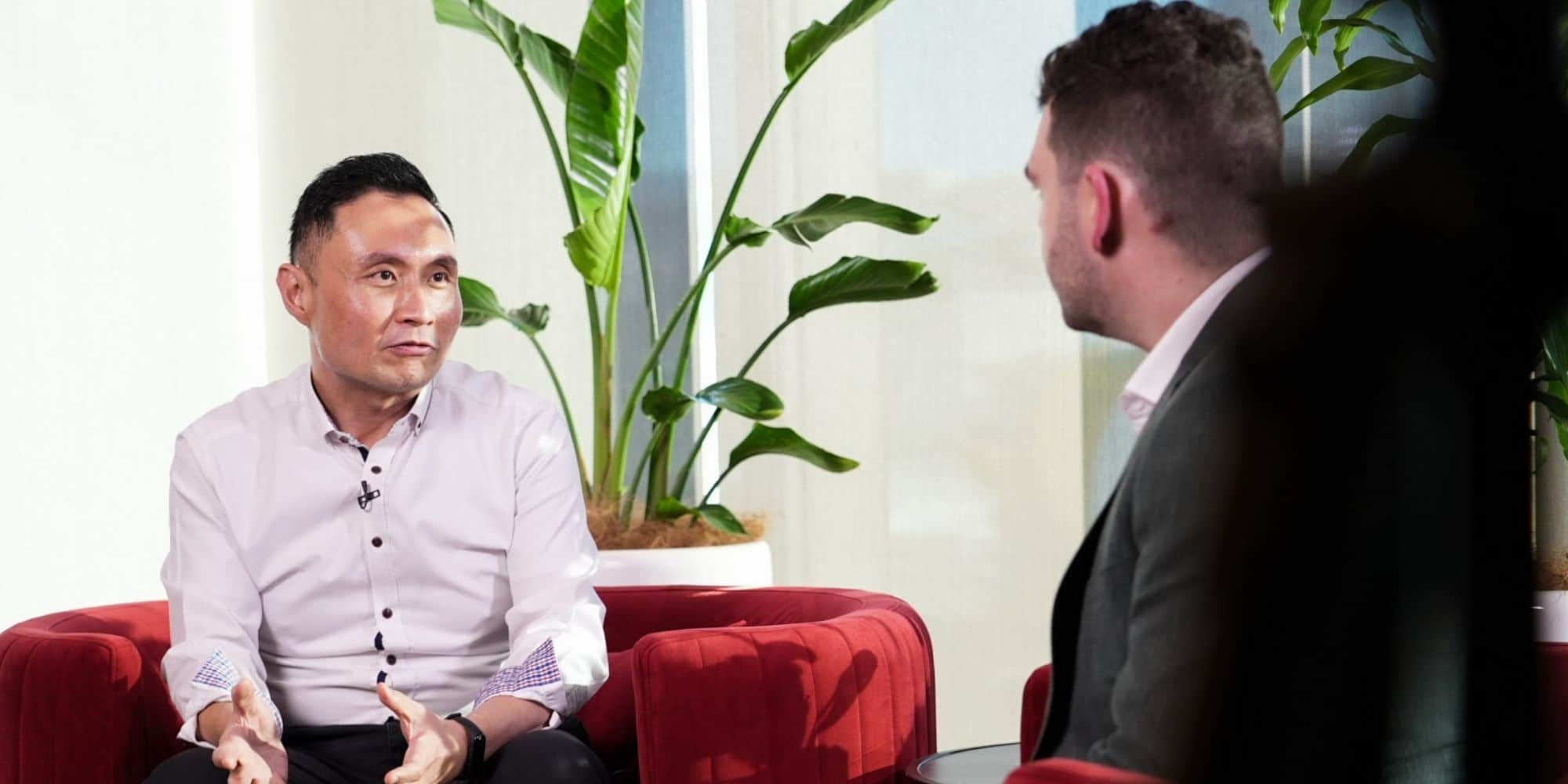
Right now, we’re trying to turn things on his head and be customer-led. Letting the customer guide us in terms of what they want, what good feels like- and then building that into our end to end journeys, understanding how a customer would want to discover hearing aids.
On average, it takes a person seven years to take action, from when they discover they’ve got a hearing loss to the time they do something about it.
One of the things that we are trying to do is shorten that pathway to a solution and focus groups having frank conversations with our clients.
That’s when we discovered that there’s a big stigma to people acknowledging even that they’ve got a hearing loss.
Very often, one of the things that I hear from our customers is that they pretend that they can hear until a family member or a friend says that you’re shouting or hold on. That person didn’t get what I was saying.
Destigmatising is a really important thing and being customer-led in terms of how they want to be engaged.
Matthew Hanley:
From what you’re saying, it sounds like there’s a change happening in the business to go from the practitioner designing that the hearing aid or the solution and the business being driven that way. Now being customer-led, there probably is a change within the literacy within the organisation and how the organisation reacts to new products or services.
Do you see digital literacy flowing through the organisation now, which may have been different years ago?
Conrad Chang:
What COVID did and forced us to do was to have a more digital end-to-end solution because the customers physically couldn’t come to the clinics.
We had to find a way to engage with them either in diagnosis or getting the hearing aid out to them. Another thing that’s also quite interesting is the education and information for our customers using digital means.
How do we put things on YouTube or in a digital format that the customer can digest easily and learn how to use their hearing aid without necessarily come into the clinic, getting an ongoing diagnosis?
One of the interesting things that have changed is how we would put on our website or how we engage customers in a more customer-friendly rather than medical terminology of describing a hearing aid.
Previously, we would say this hearing aid has decibels and can do this, which means nothing to the customer.
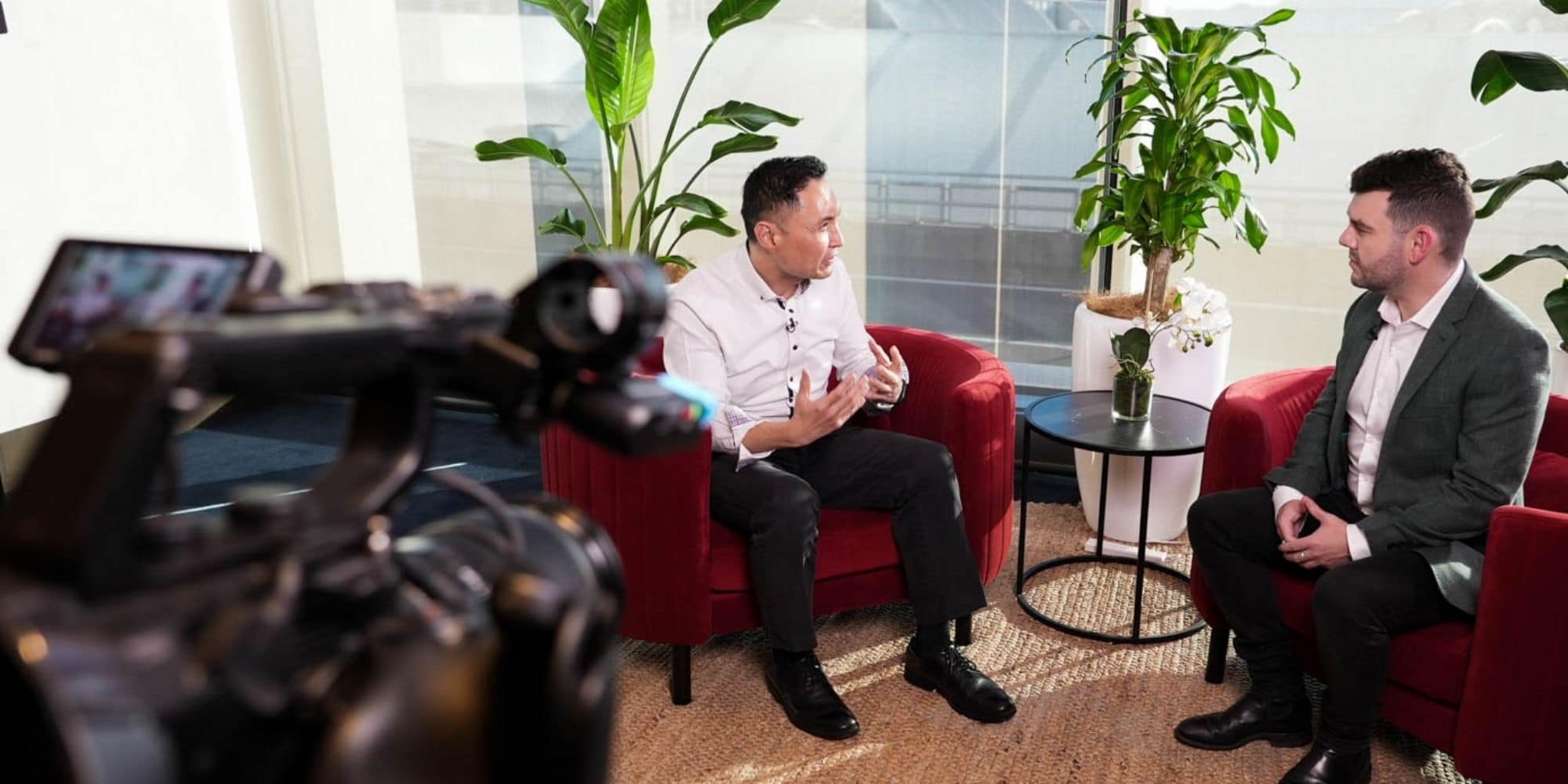
Now we describe it such that, if you want to be able to hear the sounds in the opera, if you want to hear raindrops on the roof if you want to be able to hear your spouse talking in the next room.”
We’re describing it in a language that the customer can resonate with. That’s been the biggest change because that’s what people react to.
If you describe a technically correct product, it means nothing to them if they can’t digest it. Change has also been quite exciting.
Matthew Hanley:
Fantastic. In 2020, we saw CIOs, Heads of Technology, Heads of Strategy, get elevated to a much higher role and be needed by the board and by the C-level depended on for the strategy of their business to survive to thrive.
Did any of those kinds of changes or change management pieces happen within Hearing Australia?
Conrad Chang:
We had to pivot very quickly because we couldn’t engage physically with our customers. The board was supportive but also very focused in terms of we still need to make sure that the business was viable. We still had a mission to meet our customer’s needs.
How can they be more supportive in giving us the tools or the support or the guidance that’s needed?
What’s been comforting is that COVID made the board and management and employees work more cohesively, more frequently.
There wasn’t that us and them mentality as such anymore but more like, we’re all in this together, what can we do?
That’s a nice development that it became working together for the right solution that works rather than producing a report that a board endorses, and then it becomes a formality. COVID has made it more democratic in a way.
Matthew Hanley:
A lot of our community have been saying that COVID empowered them to get 10 months’ worth of transformation done in 10 weeks. In terms of maybe some of the direction that the board has been having, or even higher management, have they been leaning on data or data-driven decisions to make the business run effective?

Conrad Chang:
One of the things that we needed to grow up quickly was to be more data literate and more data-savvy.
Because what we tend to rely on was a lot of past knowledge, but it’s not as current. Being data-driven meant that basically, not only could we be more real-time in terms of the solutions that we’re giving, but it’s more targeted.
Coming back to being digitally data-driven, COVID was a peculiar time. It forced us all to do things quickly, which was good. One of the things in strategy that I found was that we cobbled together things quickly. We had to get things out quickly.
It wasn’t a sustainable long-term proposition. It was quite clunky and basically like put together with sellotape, but the idea was that we had to get something up fast, but it wasn’t necessarily something last.”
In a post-COVID world, one of the things that I’m quite keen to make sure of is that as we are going more digital, as we’re becoming more data-driven, we need to be smart about how we are sustainably doing both, in a way that is not only economical but works for the organisation and the customers for the long term, because these short-term measures that were cobbled together served its purpose in that point in time.
It’s not something that we could continue; I would say grappling with without significant change.
Matthew Hanley:
Then maybe lastly, on the point of change, ADAPT has been producing a lot of research over the last 12 months in terms of the change of workplace design, how people work, where people work, what does work look like?
We’re seeing factors now of spring cages in properties, sizes within cities, and we’ve seen mental health come high up in surveys, and then feedback from our community is an area that they are focusing on right now.
What big changes do you think are going to stay post-COVID within your organisation?
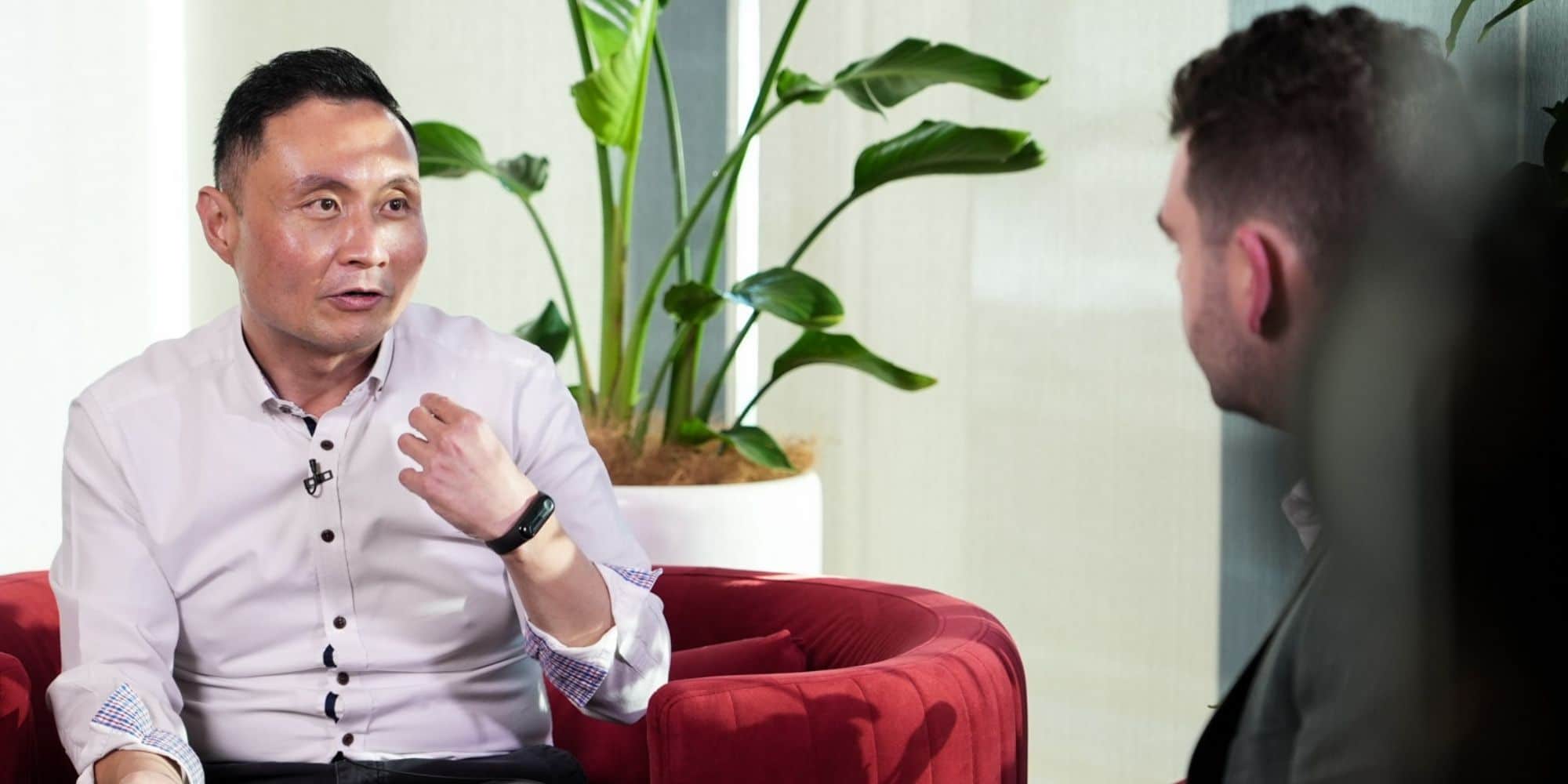
Conrad Chang:
As in many organisations, it’s comfortable to say that we are an organisation where the employee can and should decide where they choose to work.
It’s trying to get away from that mentality that we have to be in the office together for things to work. COVID has proven that we can still get many things done by working virtually and working more smartly together.
One of the things that I’m quite keen to make sure of is that as we go more virtual and more digital in our interactions as staff in the workplace, we don’t lose that spontaneity that you get from the physical environment.”
When you’re working virtually on Microsoft Teams and Zoom, and so on, the spontaneity is not there. You don’t meet someone in the corridor and then have that conversation about, hey, what project are you working on? That’s interesting.
I’ve got some information that you could use because you have to schedule an interaction by being virtual.
It’s still trying to work out how to engender that spontaneity, but also, at the same time, it’s trying to make sure that people don’t go back to old habits.
We force a lot of online collaboration, working on live documents together. Still, ever since things started to return to almost normal, people have resorted to their old ways of emailing documents or putting things on their hard drives.
How do we make sure that all the good things that happened during COVID, we maintain and then continue to encourage that good thing from going on?
Matthew Hanley:
Conrad, we’ve been here today at Digital Edge, which is ADAPT’s premier digital transformation and customer experience event.
We’ve been looking at the theme of scaling digital-first strategies and customer experience agility.
We’ve seen some brand-new research this morning published by the team and several fantastic keynotes from industry leaders. What have you thought about the presentations and the quality of research that you’ve seen this morning?
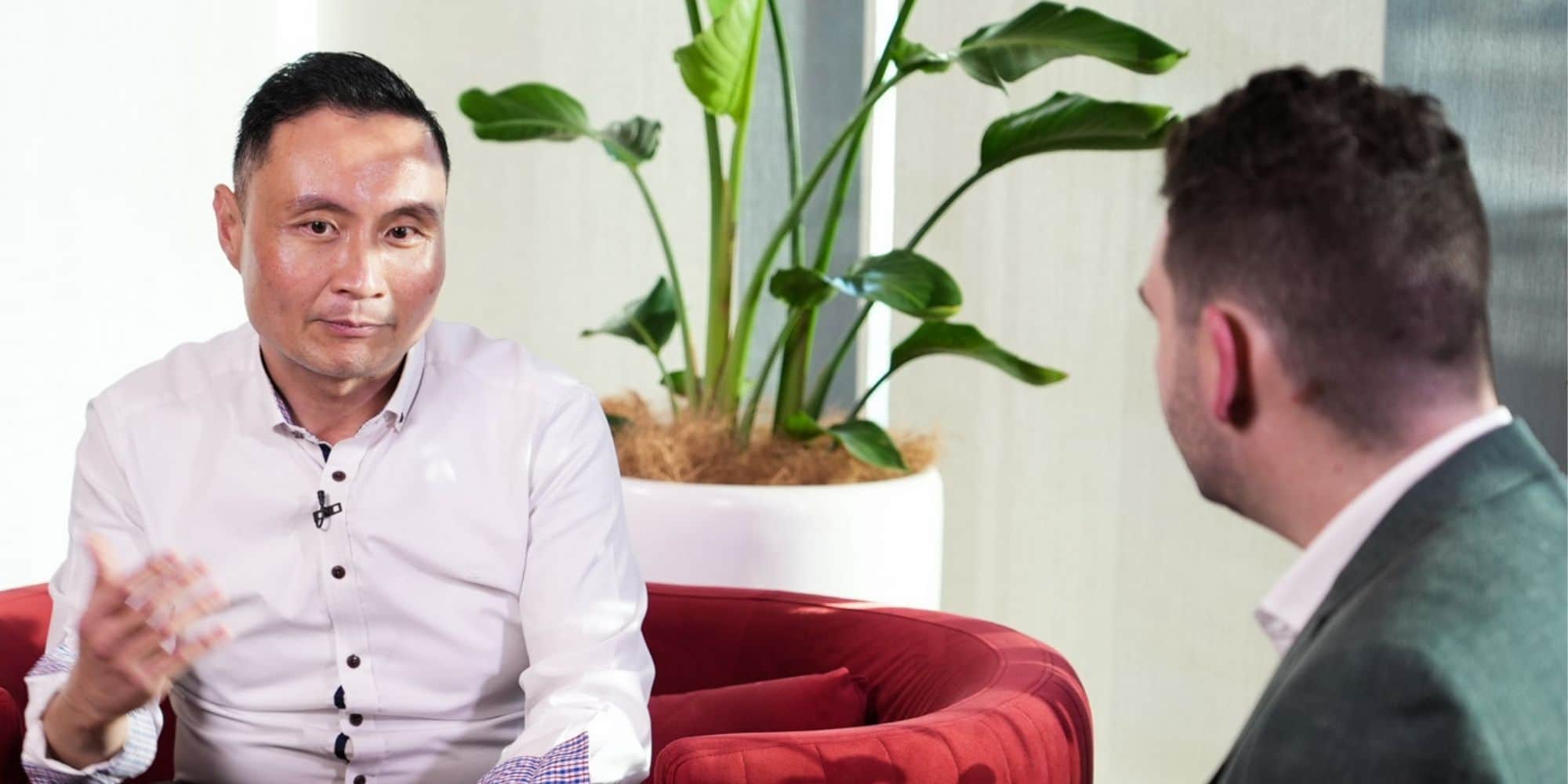
Conrad Chang:
It’s always good to have these two things resonate with me. One is to confirm many hunches that we’ve always had that look; those were the right things to pursue, stay in the course.
The second thing was to debunk some of the myths that we thought were still there.
One of the things that I enjoyed was seeing how all these different technologies were meshing up together, like AI on the cloud, for example, or the thing that got me excited was how medical and physical are merging, which is what we see in my industry as well.
It’s always good to be reminded by the data and the surveys and the research to say, is this really what’s happening in the market?
For me in Strategy, one of the things that I always need to balance is to say, well, all these new developments are catered to a very small niche in the market that I’m playing with, or is it going to go mainstream?”
Because that would change the decisions that we would need to make as a company, if it’s going to be mainstream and inevitable, it would mean changing the way we operate.
That’s a big thing. If it is a very nice thing, then it’s more about how it will go mainstream because that means that we have some time to change or turn things around.
If it’s going to be still a very, very small segment, we have to look at its commercials. There are practical aspects to innovation.
One is to be excited about it, but another is to also say what it means from a business perspective, whether or not it makes economic sense.





















